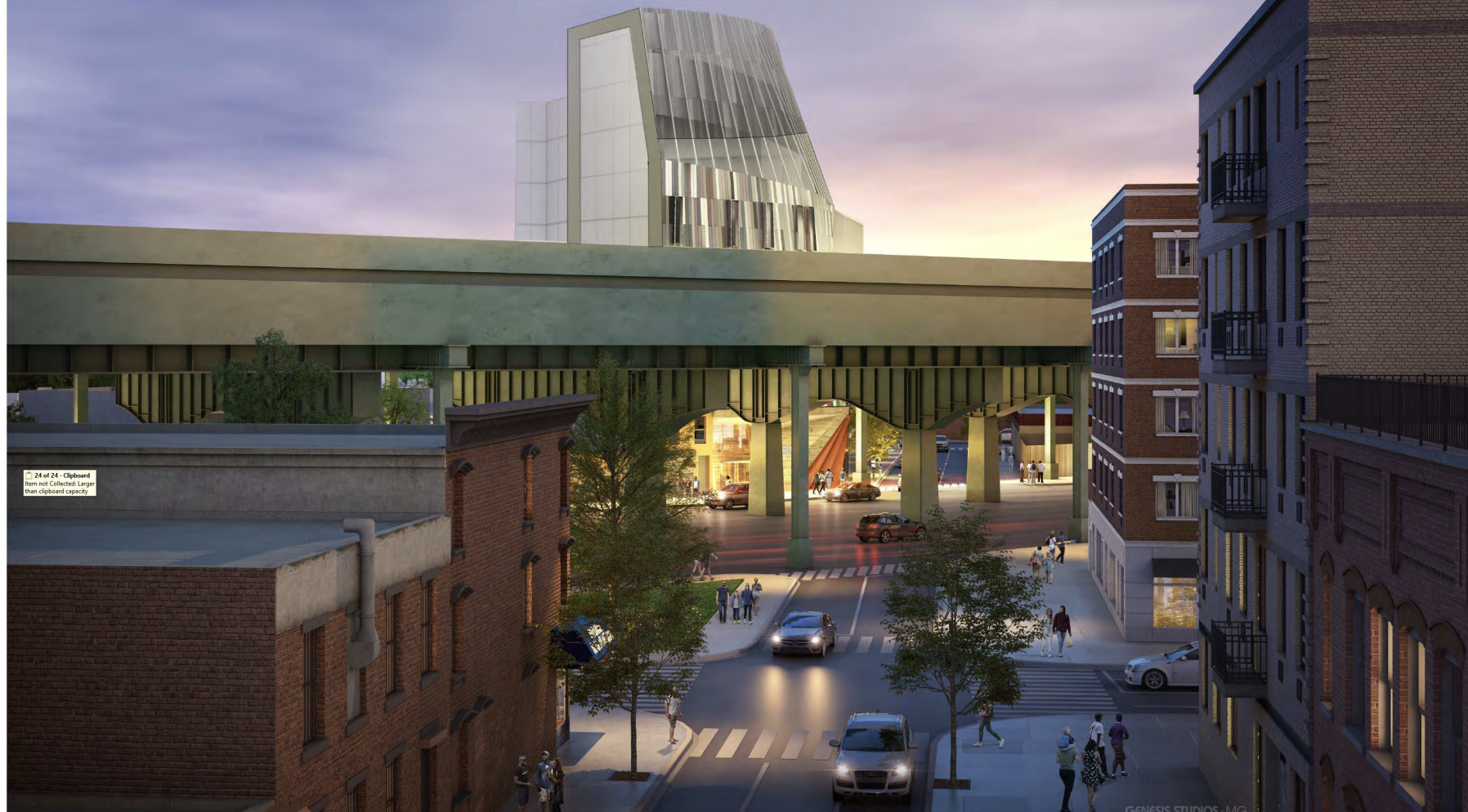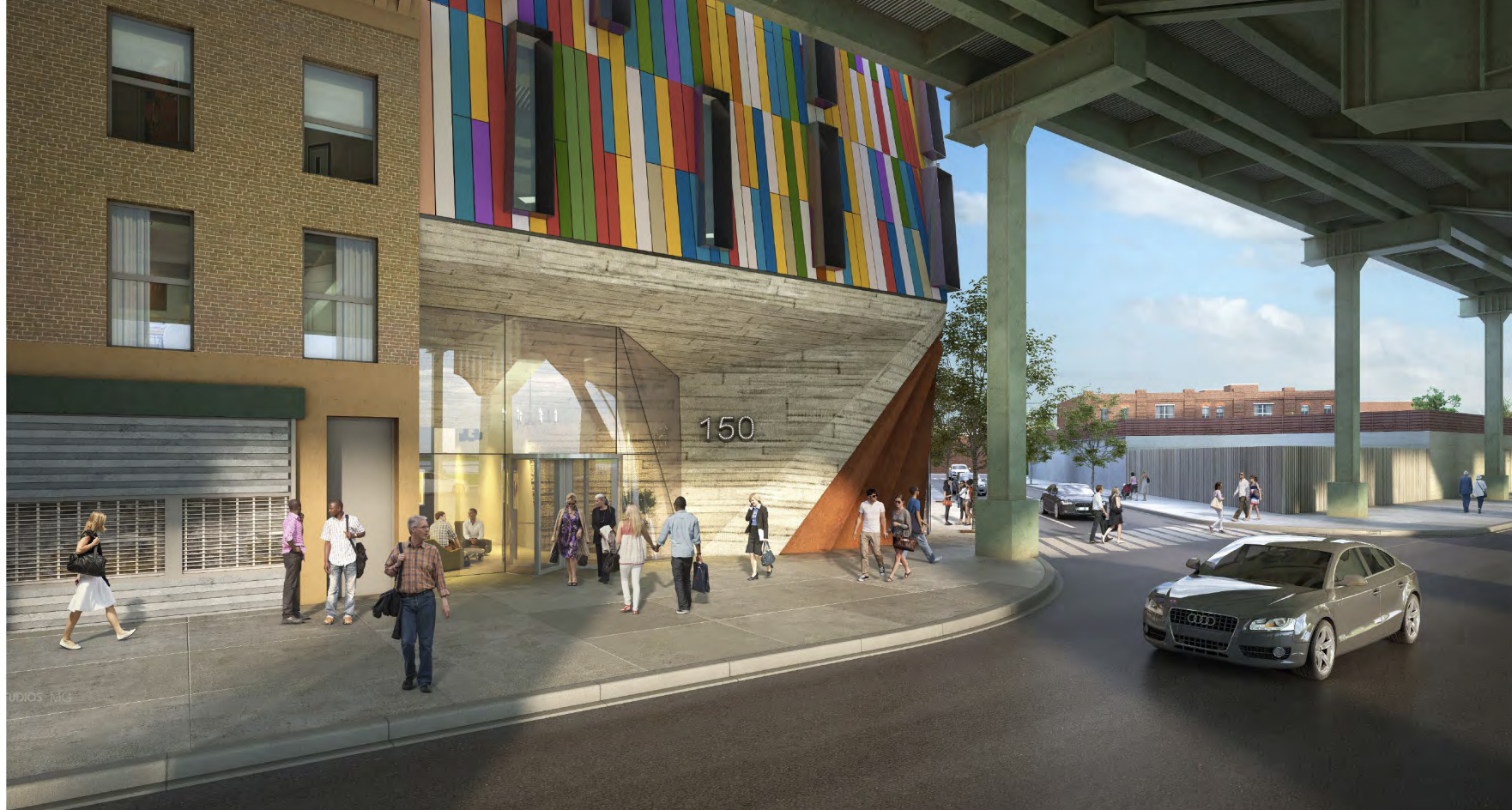A budding developer’s quest to turn a blighted site in Red Hook into an office building faces an uphill battle against the local City Council member.
Willy Pilku, the CEO of Core Scaffolding, aims to build a sleek, 10-story, mixed-use office building with space for a nonprofit and ground-floor supermarket at his property at 150 Mill Street.


“Either it’s going to be nothing or it’s going be a beautiful building,” said Pilku. The Brooklyn site, which is filled with construction materials and overlooks the Gowanus Expressway, “looks terrible,” he said.
But Pilku’s vision faces pushback from Council member Alexa Avilés, whose district includes Red Hook. Avilés is demanding Pilku include more industrial space.
She expressed concern about the project’s lack of space for light manufacturing, which she sees as a pathway to middle-wage jobs with a low barrier to entry. The site is zoned for industrial use.
Pilku’s proposal differs from most contentious rezonings of recent years in New York City. It’s not a battle over displacement, gentrification, affordability or building height. It’s not YIMBYs versus NIMBYs.
But in the 2000s, fights to convert industrial land were more common, although they usually involved requests for multifamily projects, not offices. Those fights have been made rarer by the rise of housing as a political priority and by the introduction of industrial business zones, which the city considers off-limits for rezoning.
Pilku said he plans to offer part of his project’s second floor for light manufacturing with the rest going to a local nonprofit. Pilku, whose main business is scaffolding, said he is also willing to help provide job training to community members, noting that he has friends in the construction industry.
The development has the support of the Community Board 6. Community residents also supported the project during a recent hearing, expressing the deep need for a grocery store in the area.
But the project lacks support from Brooklyn Borough President Antonio Reynoso, who expressed concern about the continued “erosion of industrial jobs” in the area. Manufacturing employment in the city has fallen below 60,000 from a peak of about 1 million in the 1960s.
Support from community boards and borough presidents is helpful in the city’s land-use process, but the key is the local City Council member. Pilku must get a thumbs-up from Avilés because the Council very rarely ignores its custom of “member deference,” and never for applications that lack broad impact.
One nonprofit organization appears to be playing an outsized role in Avilés’ concerns.
The Southwest Brooklyn Industrial Development Corporation, a nonprofit which protects industrial zones in Red Hook and Sunset Park, has not supported Pilku’s project. The nonprofit is skeptical that his Mill Street development will come to fruition, according to Reynoso’s rationale for recommending rejection of the project.
Pilku’s land-use lawyer, Richard Lobel, said at the hearing that the applicant’s team communicated with the nonprofit a number of times but failed to come to an agreement.
The proposed rezoning on Mill Street is similar in one respect to others in New York City. Local politicians and community members often ask for changes that developers say are not financially feasible.
“Frankly, it’s not an easy building,” said Lobel. “There is not a lot of room for flexibility.”
It is a challenging project to finance, the attorney said. The building sits next to a gas station with views of the overpass — not exactly a selling point for office tenants.
“You can’t take it for granted that a building will be built,” said Lobel.
Few developers are seeking to build office projects now, given the sector’s woes and the cost of financing. Pilku hopes to target subcontractors like Core to fill the nearly 50,000 square feet of office space he would erect.
Avilés’ office did not return a request for comment. At the hearing in late August, she voiced doubt that the developer would actually deliver a supermarket.
“The proposal always included what I would call a mini-mart because it’s too small to actually be a supermarket, which was what you went out and promised community members at the beginning of the process,” said Avilés.
The Council member, in her third year in office, asked whether the project would ensure industrial space would be delivered in the event of a sale. Rezonings typically include a restrictive declaration to ensure such commitments are binding.
Red Hook, once a largely industrial area, has seen increased residential development in the past two decades and, more recently, production studios. More sweeping changes loom: In May, New York City reached a deal with the Port Authority of New York and New Jersey to take control of 120 acres from the southern edge of Brooklyn Bridge Park to Red Hook.
The city plans to redevelop the land into housing, retail and green space, and to modernize a port operation.
